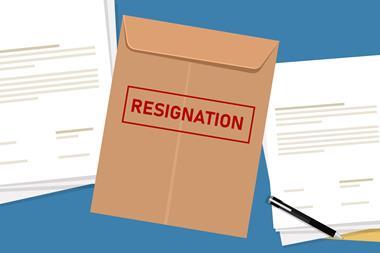Reinsurance group chief economist adds that recovery from the Covid-19 pandemic is a ‘marathon’
The ramifications of the Covid-19 pandemic on global supply chains proves that this sector needs “better protection” from the insurance market, according to Jérôme Haegeli, group chief economist at reinsurance firm Swiss Re.
Addressing the media last week after the publication of Swiss Re’s fifth annual Sigma report, titled Turbulence after lift off: global economic and insurance market outlook 2022/23, Haegeli said: “Supply chain disruptions to [businesses] and society show that we need better protection.”
He continued: “Supply chain disruption and bottlenecks is probably not over yet. We are probably still moving from ‘just in time’ to ‘just in case’ supply chain changes.
“Just in case supply chain changes doesn’t need to be more negative, [however], but it has a price tag - the price tag is higher goods prices.”
Haegeli’s observations about the supply chain industry formed one of his key lessons learned from 2020 and 2021. Reflecting on the pandemic period, Haegeli described Covid-19 as a “wake-up call” that has dramatically boosted risk awareness and perception – he believes this is “very positive for the insurance market” because it generates demand for insurance products.
Equally, Haegeli noted that the coronavirus pandemic emphasised the “vital” role of reinsurance.
He explained: “The reinsurance industry remains vital – vital in being a risk absorber, especially in times of crisis.
“Yes, Covid-19 was a systemic shock. Yes, we needed to have government support. Yes, Covid-19 was a big earnings event for the insurance industry, but it wasn’t a capital event.”
Other lessons learned that Haegeli pinpointed included the “record breaking” climate extremes that have been seen over the last couple of years, which he believes has created greater urgency to accomplish net zero economies.

This becomes more pertinent when considering the global natural catastrophe protection gap, Haegeli added, which has been influenced by climate change.
The chief economist said that 76% of natural catastrophe losses globally have been unprotected by insurance and that weather-related insured losses are set to skyrocket by between 90% and 120% by 2040.
For him, the insurance sector is very much part of the solution in achieving net zero economies because it can work to eliminate these types of protection gaps.
Premium growth
As for premiums, the Swiss Re Institute estimated that global non-life premiums will grow by 3.3% in 2021, 3.7% in 2022 and 3.3% in 2023, with property catastrophe rates forecast to improve in 2022 after a year of above average losses.
Swiss Re’s report added: “Casualty rates should also be stronger next year due to ongoing social inflation while personal lines are expected to benefit from early signs of improving motor pricing in the US and Europe.”
Haegeli added that rate hardening will continue in commercial lines.
The three D’s
Turning to the overall economic outlook, Haegeli said this is centred around the three D’s of decarbonisation, digitisation and divergence – these are the key themes that will influence the global economy’s “marathon” recovery following the pandemic.
Haegeli explained that “decarbonisation is ongoing and is a big upside for the insurance industry”.
He continued: “The race to net zero is ongoing, that positive momentum. I don’t think it’s all adding up yet in terms of [meeting the] Paris Agreement, but the really good news is the momentum is here and will continue. The alternative of not doing further action is not a luxury. Doing more on the climate policy front is needed.”
In turn, “digitisation is super important for the insurance sector” too, noted Haegeli. He added that this can impact insurance pricing, distribution, the creation of new products and help narrow protection gaps, all of which is “good for insurance”.
He said: “Digitisation is super important for the insurance sector in terms of how we price risk, how we sell products and if you look at consumer surveys we have done this year, there’s larger uptake for insurance products through digital channels.”
Haegeli also identified divergence as “something to watch out” for. “We are seeing more and more divergence within economies,” he added.
Inflation pressure
Inflation, however, remains a big focus and is the biggest short-term risk economies need to be aware of, according to Swiss Re’s analysis.
“Inflation pressure is here,” Haegeli said. He attributed this to “supply chain bottlenecks”, “labour shortages”, “hiked rates already” and the fact that Covid-19 created the “biggest fiscal stimulus in our lifetime”.
Medium term risks, with a 12 to 18 month outlook, include pandemic setbacks, asset price retrenchment and geopolitical tensions, Haegeli continued. Long-term risks, on the other hand, include climate change and protracted supply issues.












































No comments yet